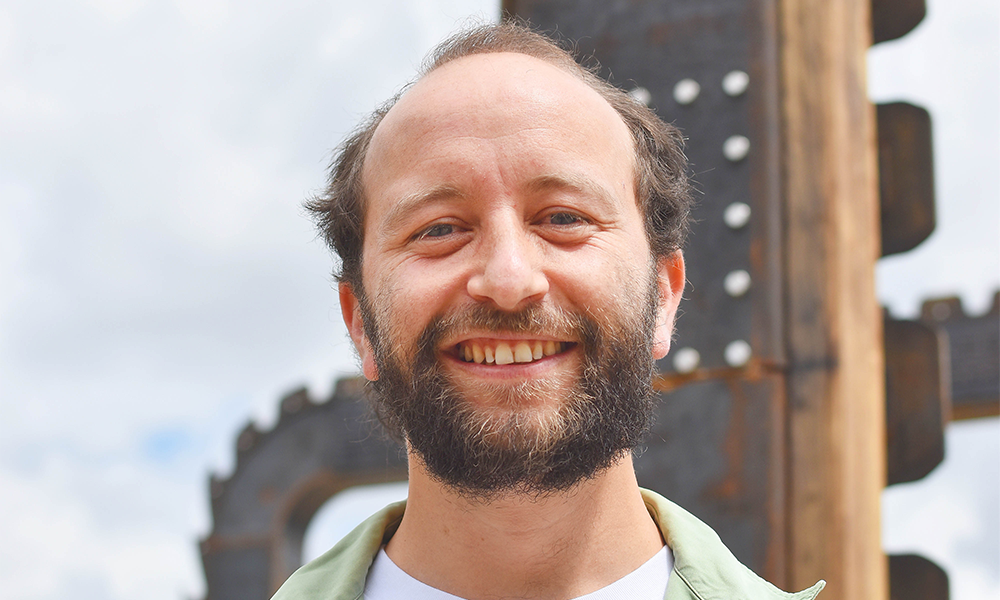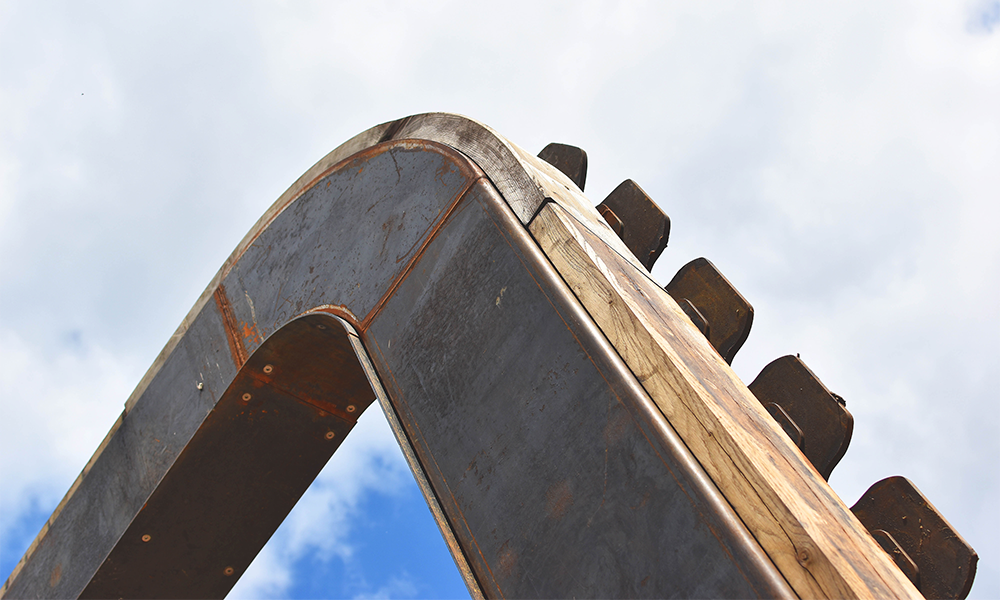Hand-cranked structure designed by Thomas Randall-Page allows the dock to be reflooded

Subscribe to Wharf Life’s weekly newsletter here
There can be few pieces of infrastructure in the world that so succinctly represent the story and future of a project in the way Cody Dock’s rolling bridge does.
Recently tested for the first time, it’s the culmination of years of work – an elegant, ground-breaking solution that’s at once simple, highly engineered and not insubstantially bonkers.
The Gasworks Dock Partnership (GDP) has, with the help of more than 11,000 volunteers, spent the last 13-and-a-half years working to clear and regenerate an unloved patch of industrial land on the River Lea – used for many years as a toxic tip.
A major milestone in that project will be the re-flooding of the dock itself.
With the junk cleared and the polluted sludge beneath painstakingly removed, the GDP always knew it needed to sort out a solution to the crude dam that currently provides a bridge over the dock entrance, but also blocks access from the tidal waters of the river.
GDP co-founder and CEO Simon Myers had duly found an off-the-shelf rising bascule bridge from Holland that would do the job – bridging the gap and opening when necessary to let ships in.
Planning permission was applied for and granted. But then something happened.

“It always starts with a conversation in a pub, doesn’t it?” said Thomas Randall-Page, designer of Cody Dock’s rolling bridge.
“Somebody told me Simon was building a new bridge, that it was a product from Holland and that it wasn’t the most interesting thing.
“I didn’t have any work at the time – I’d just quit my job to set up my own practice and I approached Simon and asked if I could counter-propose something that people would come and visit rather than just walk across.
“He said that would be fine, because they already had planning permission for the other bridge and I was doing it for free.
“Then I went off to help my friend move her canal boat and spent two weeks going through locks and looking at all this amazing Victorian infrastructure – most of it counter-balanced and low energy.
“So I started to think about an opening bridge but one that worked in a way that had never been done before.”

The result was a model for a rolling bridge, produced in partnership with structural engineers Price & Myers.
Operated by a hand crank, the whole structure inverts on tracks, raising the footway high above any ships that want to gain access to the dock.
“In a way it’s the opposite of the bascule bridge, because that’s all hydraulic – like trying to lift something at arm’s length – so a lot of energy goes into it,” said Thomas.
“This one is a very balanced system with counterweights, so it’s going to be manual – you just turn a handle and wind it over.
“It will be quite slow, but people will be able to do it themselves and hopefully others will come to watch it open.”
While Simon and the GDP team were immediately attracted by Thomas’ proposal, they put it through a rigorous process of assessment to ensure it was something that would both work at scale and could be built within budget.
“We knew we were taking quite a big risk with something that’s untried – to our knowledge, this is the only bridge of its kind in the world,” said Simon.
“Thomas gave us what we needed to convince our board and we decided to re-apply for planning permission, although he had to wait five years for us to give him a call and say we’d found the money and were actually going to build it.

“That was about a year ago and he engaged Price & Myers to work on it, all knowing that there was a fixed budget that we simply couldn’t go over.
“From the outset, everyone was committed – there has been blood, sweat and tears poured into it, nobody has made any money but they all wanted to make it work.
“That’s really humbling – it shows there’s a different economy at work, one where people do things because they are passionate and excited about them – when do you get the chance to roll a 12-tonne cube of steel by hand except on a project like this?
“The bridge is the most significant structure here. The dock itself is important, but it’s no good if boats can’t get in and out – it’s a statement of intent that we are bold and ambitious here.
“It’s our first really big commission, it puts a marker down and it raises our game – with 400 names of those involved in its construction engraved on it, it really is a bridge of the people.”

Thomas added: “I started designing the bridge seven years ago, so to finally see it in place is both surreal and great – really amazing,” said Thomas.
“It’s better than I’d hoped. Cake Industries, who fabricated it, have been really helpful. There’s been so much goodwill in the whole team – a really collaborative and open process.
“Everyone felt like this was a project we really have to get right. It’s something special.”
So there you have it – a £260,000 bridge that will officially open later this year and last for the next 125.
It’s both a testament to the whole project’s collaborative nature and a gateway to a future that’s looking especially bright at present, with a the construction of a new visitors’ centre and a wash block already underway.
With repair of the dock wall progressing and pilings in place at its far end too, GDP can now plan to re-flood the dock, creating residential moorings and a dry dock facility on-site.
Cody Dock is always looking for volunteers and companies to help it achieve its aims – you can find our more here.

Read more: Artist creates pieces for Pride Month across Canary Wharf
Read Wharf Life’s e-edition here
Subscribe to Wharf Life’s weekly newsletter here
- Jon Massey is co-founder and editorial director of Wharf Life and writes about a wide range of subjects in Canary Wharf, Docklands and east London - contact via jon.massey@wharf-life.com



